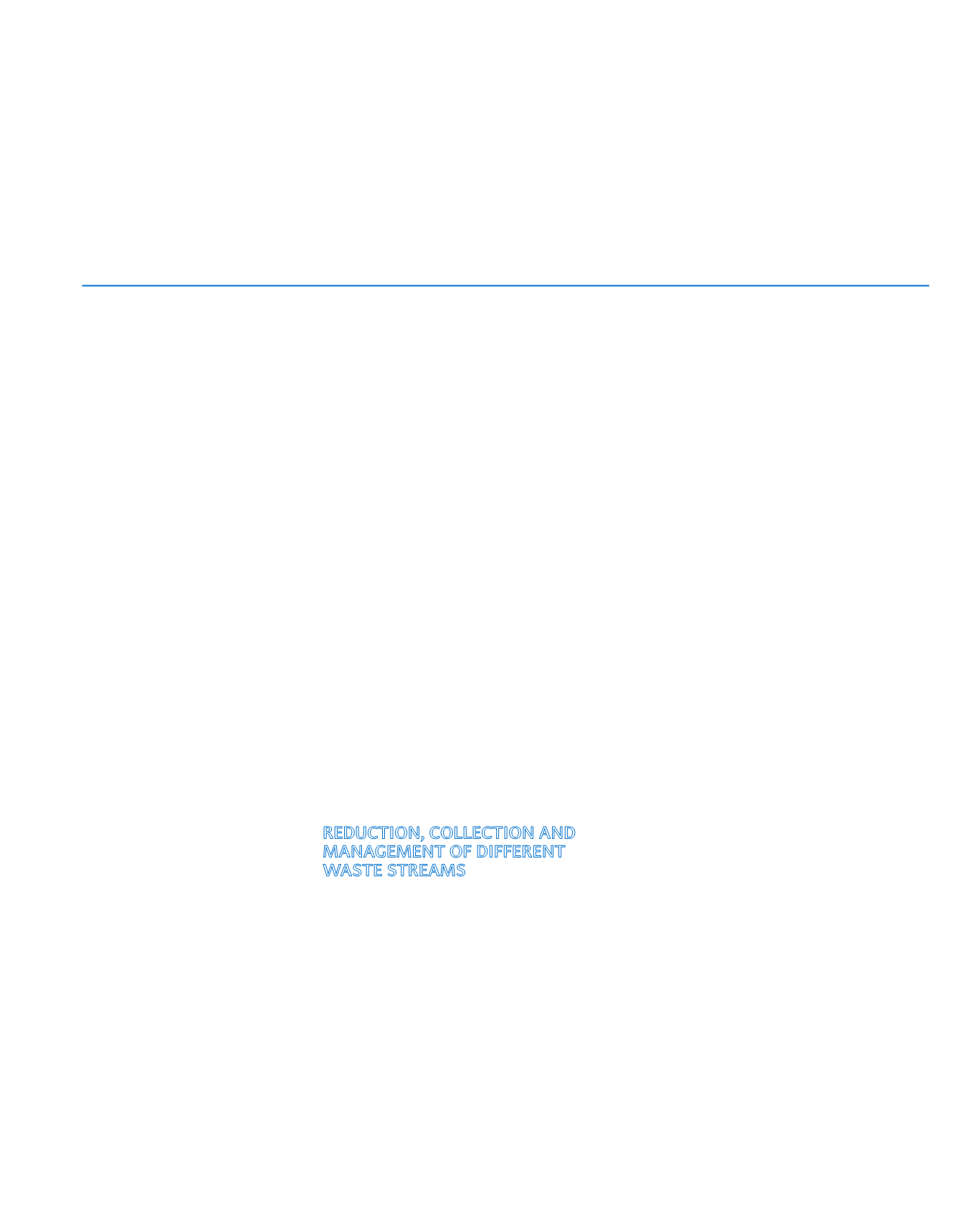

Cruise ships carry thousands passengers
at a time and are essentially floating
hotels, with all the amenities that
accompany them, plus they have the
additional constraints associated with
travel by sea; this makes it necessary
to minimize the amounts of the
different types of waste produced and
adopt a structured approach to their
management and disposal.
The cornerstones of Costa Cruises’
shipboard waste management policy
are
reduction, reuse, recovery
(of
raw materials and products) and, where
possible,
recycling
of the materials
intended for disposal, with the relevant
detailsspecifiedintheCompany’s
Waste
Management Plan
. In accordance
with the MARPOL Convention,
10
the
Plan prohibits the discharge of waste at
sea, with the exception of ground food
waste and a few other specific categories
of treated waste.
REDUCTION, COLLECTION AND
MANAGEMENT OF DIFFERENT
WASTE STREAMS
Efforts to reduce the amount of waste
produced, starting from the supply
chain and with a focus on packaging,
are at the heart of any effective and
efficient waste management system.
Costa also concentrates on educating
crews and guests to as to promote
responsible consumption and reduce
wastage of materials.
Thanks to this approach, in 2015 total
waste
11
registered a further decrease, at
7.4 l/day as against 7.9 l/day the year
before (-5.1%).
Separate collection of recyclable
waste streams takes place fleetwide.
Waste is treated on board so as to
minimize volume; this is done by
crushing, compacting and sometimes
incinerating, depending on the type.
Waste generated and processed on
board is disposed of in the ports of call,
the relevant operationsbeingcarriedout
in cooperation with local organizations
and authorities. Authorized contractors
remove materials from the ships
and may store them temporarily
before disposing of them at approved
shoreside facilities. Costa Cruises is
committed to using port reception
facilities that will recycle the materials
discharged from its ships, where this
is possible. It is also specified that, due
to limited stowage capacity, it is not
always possible to only use shoreside
waste contractors who guarantee
segregated waste disposal.
Great attention is also paid to the
management of hazardous and toxic
products. The Company uses non-toxic
product purchasing criteria and has
made specific efforts to significantly
reduce the number of hazardous
products, including use of an approved
chemicals list. An integral part of this
project is the gradual replacement of
older equipment with new apparatus
designed for non-toxic products.
Integrated waste management
10
Annex V – updated in 2013.
11
Average waste production per person
counting both passengers and crew.
Un lattina é
un’incredibile
banca di energia.
Posizionate in fila una accanto all’alt
sar bbero ufficienti a coprire una
distanza pari a
dal 2007
raccolto
riciclo
33
tonnellat
di allumi
con
334
tonnellate
di alluminio
è possibile
realizzare...
33.
biciclette
3.915Km
















